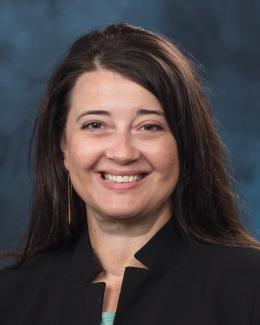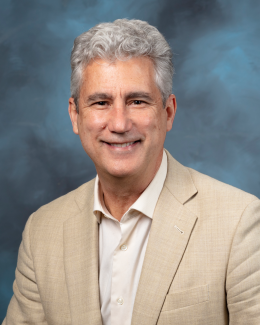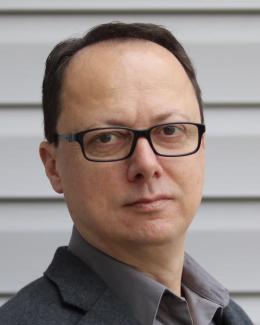Tackling the climate crisis and achieving an equitable clean energy future are among the biggest challenges of our time. Oak Ridge National Laboratory, the largest Department of Energy science and energy laboratory in the country, is deeply invested in the big science capabilities and expertise needed to address the climate challenge on multiple fronts.
ORNL scientists are gaining a better predictive understanding of what the future may hold. The Climate Change Science Institute at ORNL is leading unique large-scale experiments and leveraging the nation’s fastest supercomputer, Summit, to analyze massive datasets to improve Earth system models that predict future climate. Researchers are using these models to simulate and analyze climate impacts on critical facets of our daily lives – from urban communities and health outcomes to electricity demands, infrastructure needs and national security.
Extensive resources and research efforts are focused on generating solutions. The lab’s unparalleled neutron sources, nanoscale science center and materials science experts are conducting foundational research that underpins technological innovation in clean energy. The DOE Center for Bioenergy Innovation, or CBI, at ORNL is developing the plants, microbes and new approaches needed to produce sustainable jet fuels and a range of bioproducts. ORNL’s Transformational Decarbonization Initiative, or TDI, is tapping the lab’s applied energy user facilities to translate basic science into deployable solutions for carbon mitigation in all of the nation’s energy sectors.
The stakes are high, and it will take an unprecedented level of collaboration, investment and bold innovation to tackle these national and global challenges.
“Climate change is a big threat that we are facing today. And there’s a lot to be done, from understanding the extent of climate change, understanding the extent of the impacts of these extreme events, to finding ways in which we can adapt to these changes,” said Deeksha Rastogi, an ORNL computational scientist. Her work projects climate impacts at the regional and local scales.
For ORNL ecosystem ecologist Colleen Iversen, understanding current and future climate change begins with interdisciplinary research and the hidden world beneath our feet. “One of the reasons I like to work at a national laboratory is because we have a mission, and that mission is to help society better prepare for the future based on decisions we make today,” said Iversen, whose work focuses on the root-soil interface. “So even though I study and measure only a small part of the natural world, I can put those pieces together like a puzzle with the measurements that other people are making and use that to inform the mathematical models that run on supercomputers that can help us to do experiments with the entire world.”
ORNL’s Jerry Tuskan, a plant geneticist and CEO of CBI, is bringing together scientists from multiple disciplines and institutions to resolve the challenges of an efficient process to create biofuels to replace fossil fuels in transportation. By growing specially engineered crops, the process has the added benefit of sequestering CO2 in soils.
“If we can meet the U.S. goals for displacing fossil fuels and reducing atmospheric CO2, we will not only create green jobs here at home, but we will also benefit people around the world who live in low-elevation environments in coastal regions,” Tuskan said.
The lab is developing a series of technologies that will be useful for capturing and converting carbon dioxide, according to ORNL’s David Sholl, TDI lead. “One of the key things we need to do to mitigate climate change is reduce the amount of carbon dioxide that we put into the atmosphere,” he said. “One of the ways we can do that is to pull that carbon dioxide out of the atmosphere. We’d also like to find useful things to do with that carbon dioxide.”
An ORNL carbon capture technology already licensed to industry was developed by a team led by Radu Custelcean. The project drew on their foundational knowledge of materials and chemistry to create a new sorbent that directly captures carbon dioxide from the air.
“The more people that become involved, the more momentum it builds,” Custelcean said of the research. “I have focused on the science of developing and optimizing materials for carbon capture, but you need a lot of other people with different backgrounds to turn the work into a real-world technology. We work with engineers to design efficient equipment and with industry to scale up the process.”
“Partners bring in new perspectives that grow the technology. It’s motivating when you have a community of people invested in deploying a project to make a real impact on global climate change,” he said.
“We have to figure out how to address climate change,” said ORNL computational scientist Christa Brelsford, who studies climate impacts in cities. “The only possible way for changing how all 8 billion of us on the planet interact with the Earth system is through human social processes: our laws, policies and behaviors. Those social processes then shape the technology we use, the cities we build, and ultimately the greenhouse gases we put in the atmosphere.”
For Brelsford, a better understanding of how environmental change is affecting urban communities, especially its most vulnerable residents, can have a tremendous impact on climate mitigation and resilience.
Hear more from these scientists and several other of ORNL’s world-renowned researchers about how they are leveraging the lab’s resources to develop solutions for a better world.
UT-Battelle manages ORNL for the Department of Energy’s Office of Science, the single largest supporter of basic research in the physical sciences in the United States. The Office of Science is working to address some of the most pressing challenges of our time. For more information, please visit energy.gov/science. — Stephanie Seay and Kim Askey






